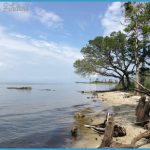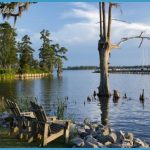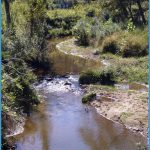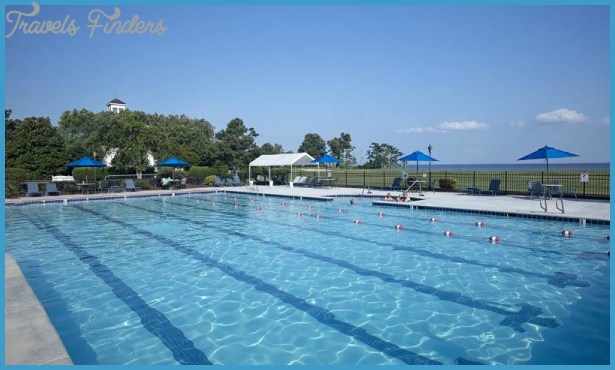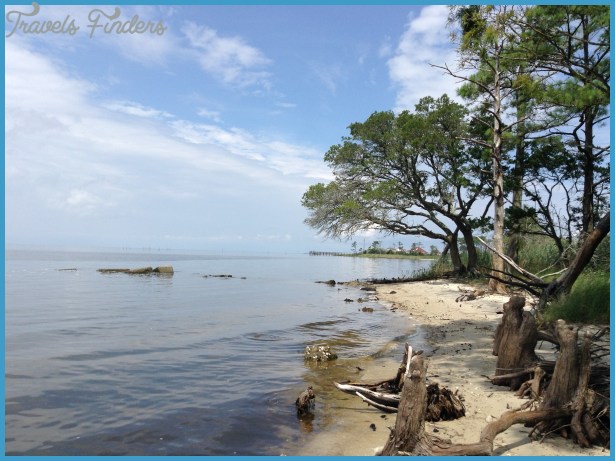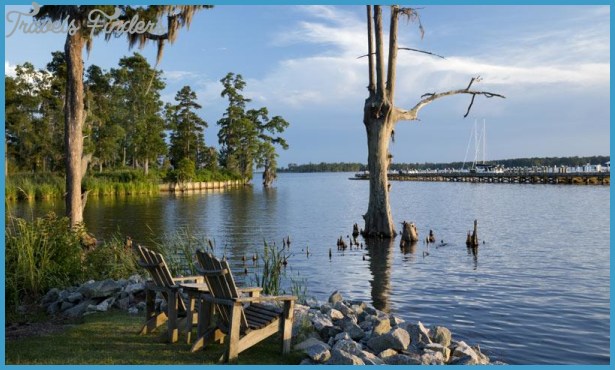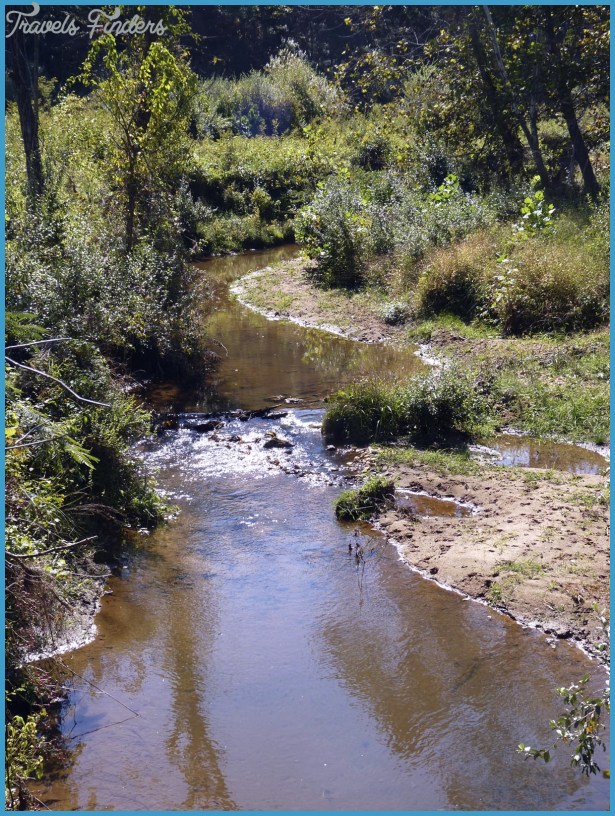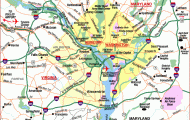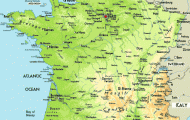RIVER TOWNS OF THE CASHIE, CHOWAN, ROANOKE, AND PERQUIMANS
Idyllic small-town charm, rich history, and pastoral beauty characterize the upper reaches of Albemarle Sound. The drive suggested here, while touching on some of the chief attractions of the area, is only one choice among many good options. An official state byway, the Edenton-Windsor Loop Scenic Byway, follows a shorter and different route that, while visiting fewer towns, guides the traveler to some other scenic options.
We begin in the small town of Windsor on the Cashie River. Most people bypass the town on U.S. Highway 17 or U.S. Highway 13, but since we know better, we’ll get off these main roads and explore the heart of the town. Settled in 1772, Windsor is named for Windsor Castle in England. If you have a pair of strong legs, you can navigate the entire town in about an hour and visit the fine collection of eighteenth-, nineteenth-, and twentieth-century houses along King Street. A worthwhile detour from the main route is to take NC Highway 308 west out of Windsor for about four miles to the 1803 Hope Plantation.
From Windsor, we travel through open farmland to the first crossing of the Cashie River on the Sans Souci Ferry. The name comes from the French and means without concern. Like Parker’s Ferry in Route 20, Sans Souci is a cable ferry. Its original perfunctory role of getting vehicles and passengers from point A to point B in the quickest amount of time no longer applies. Today, people drive out of the way just to cross on the ferry. Nostalgia and scenic backwoods splendor have a way of doing that to people. Besides, who could resist a ride on a ferry called Sans Souci?
A few miles from Sans Souci, you come to the second crossing of the Cashie River, followed immediately by the Middle River and the Roanoke River. The high vantage point of the overpass provides a great view for the passenger, but it’s not safe to stop on the bridge.
Civil War buffs will love Plymouth, the next town on our route. Situated beside the Roanoke River, Plymouth was the site of the second-largest Civil War battle in the state. Union forces occupied Plymouth in May 1862. In April 1864, Confederates, under the command of twenty-six-year-old General Robert F. Hoke, recaptured the town in the Battle of Plymouth, helped immeasurably by the ironclad CSS Albemarle. Later that year in October, a gutsy move by twenty-one-year-old Navy Lieutenant William Cushing sank the Albemarle, and Plymouth once again fell to Union forces. The town remained under Union control until the end of the war.
Start out on U.S. 17/13 in Windsor. Head south for 2 miles, then turn left onto Woodard Road. Drive 12 miles, then turn right onto NC 308. Drive 7 miles to the first intersection beyond Roanoke River. Turn right and visit Plymouth, then backtrack and proceed straight on NC 308 east. Drive 2 miles, then turn right onto Woodlawn Road. Drive 3 miles, then turn right onto Cross Road. Drive into Roper and turn left onto Old U.S. 64. Drive half a mile, then turn right onto Newland Road. Drive 11 miles, then turn right onto Weston Road. Drive 4 miles to Pettigrew State Park, then take Thirty-Foot Canal Road. Drive 4 miles, then turn left onto County Road 1142. Drive 2 miles to Creswell, then turn right. Drive half a mile, then turn left onto Old U.S. 64. Drive 8 miles, then turn right onto NC 32. Drive 11 miles to where Yeopim Road cuts back to the right. Continue straight for 2 miles to Edenton, then backtrack and take Yeopim Road. Drive 8 miles (road name changes), then turn right onto Snug Harbor Road. Go a quarter mile, then turn left onto Pender Road. Drive 4 miles, then turn left onto Harvey Point Road. Drive 4 miles, then cross over U.S. 17 into Hertford. Continue through town on Business U.S. 17, then turn left on NC 37. Follow it to Winfall. (100 miles)
Cypress Point is a great spot to view the sunrise over Lake Phelps in Pettigrew State Park.
Because of the heavy fighting, few antebellum structures remain in Plymouth. However, the town has a nice collection of early-twentieth-century buildings, all easily viewed along the town’s official walking tour. Must-sees are the replica Roanoke River Lighthouse, the Maritime Museum, and the Port O’ Plymouth Museum, the latter a fine Civil War museum. Plymouth also boasts a scale replica of CSS Albemarle anchored at the waterfront.
From Plymouth, we backtrack to NC Highway 45 and head for the community of Roper. Watch for the tunnel created by the row of old oak trees lining the road. After passing through Roper, the land opens wide and for the next several miles you pass through a major agriculture district, with soybeans and corn as far as the eye can see.
The kitchen is one of several buildings open to visitors at Somerset Place State Historic Site on Lake Phelps. The antebellum Collins Mansion House is visible through the window.
Pettigrew State Park is a hidden gem of the North Carolina parks system. Lake Phelps, which lies entirely within the park boundary, is the state’s second-largest natural lake at over sixteen thousand acres. Sitting at a higher elevation than the surrounding land and having no springs to feed it, the lake depends entirely on rainfall. As such, its water is relatively clean and usually crystal clear. Some thirty ancient dugout canoes have been discovered buried in the lake bottom. Radiocarbon analysis dates the canoes from 2430 BC to AD 1400. That makes the oldest one more than four thousand years old! Most of the canoes still lie buried, but some have been removed and are on display at the park.
Pettigrew has a lot more to offer than just Lake Phelps, though. Surrounding the lake are dense pocosin, cypress, and hardwood forests. Some of the trees here are so large they are state and national champions. Hiking and biking paths lead through these old-growth forests. The park also offers camping and picnicking facilities, in addition to fishing and boating on the lake.
Next door to Pettigrew State Park and also on the lakeshore is Somerset Place State Historic Site. Begun as a rice plantation in the late 1700s and built on the backs of slave labor many brought directly from Africa Somerset became one of the most prosperous plantations in antebellum North Carolina. At one point, more than eight hundred slaves lived here. Somerset thrived until the Civil War, after which there was no one left to work the land.
During the days of horse-drawn wagons, stately elm trees lined the streets of Edenton.
This circa-1900 view shows Main Street, renamed Broad Street sometime in the early twentieth century. North Carolina Collection, University of North Carolina Library at





